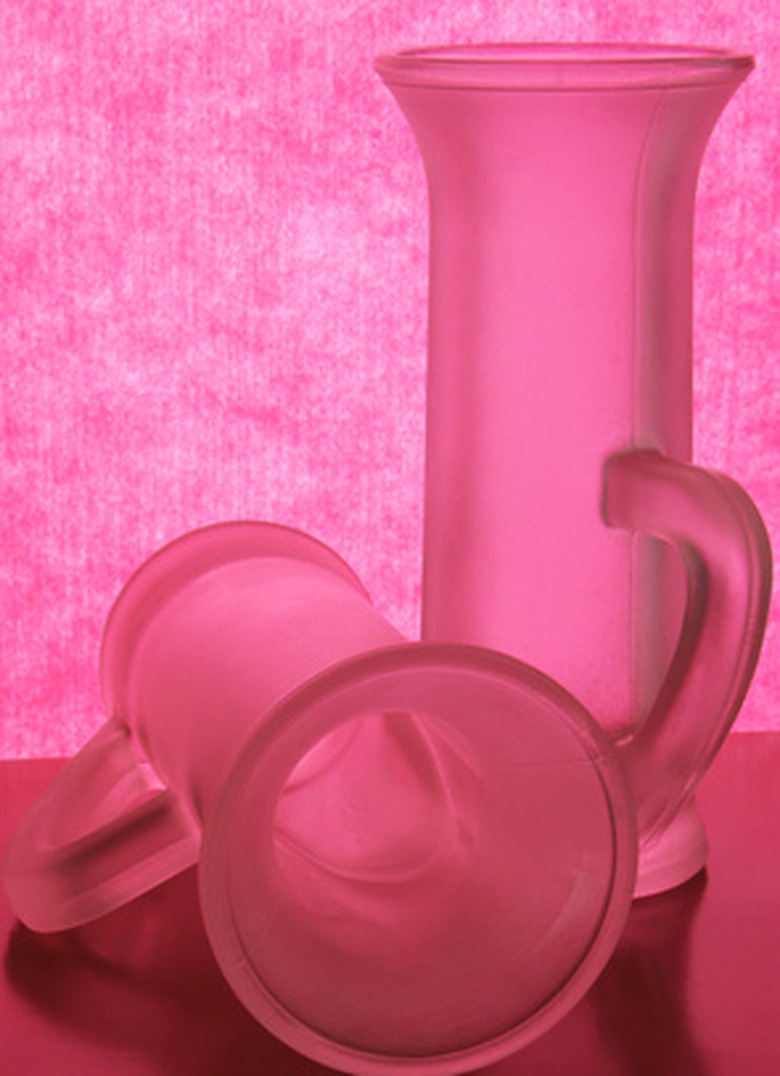How To Calculate An Isolated Yield
In chemistry, the term "yield" refers to the amount of a product or products a chemical reaction produces or "yields." There are two types of yields: theoretical yields and actual yields. As you determine a reaction's "actual" yield based on the amount of product you're able to "isolate" from the reaction chamber, some chemistry textbooks refer to it as the "isolated yield." Compare this "isolated yield" to your theoretical yield to calculate "percent yield"–how much product you received in terms of how much you expected to get.
Step 1
Balance your chemical equation by ensuring that there are exactly the same amount of each atom on the left side are there are on the right. You can represent the decomposition of solid copper nitrate, Cu(NO3)2, into copper oxide powder, nitrogen dioxide gas and oxygen gas, for example, using the unbalanced equation Cu(NO3)2 –> CuO + NO2 + O2. Notice first that there are two nitrogens on the left side and only one on the right. Add a "2" coefficient in front of "NO2" to fix this. Count the oxygens on the left–there are six–and on the right–there are seven. Since you can only use whole-number co-efficients, add the smallest one (a "2") in front of Cu(NO3)2. Add another "2" in front of "CuO" to balance the coppers and count oxygens again–there are 12 on the left side and 8 on the right. Keeping in mind that there are also now four nitrogens, change the "2" in front of your nitrogen to a "4"–your equation is now balanced, as 2Cu(NO3)2 –> 2CuO + 4NO2 + O2.
Step 2
Calculate "molar mass" values of your reactants and products, keeping in mind that you won't need to concern yourself with gases at all for the purpose of percent yield reactions. For the example reaction, then, you'll just need to calculate the molar masses of copper nitrate and copper oxide. Use your periodic table to determine molecular weights for both Cu(NO3)2 and CuO in amu–187.56 amu and 79.55 amu, respectively. Their corresponding molar masses are 187.56 grams and 79.55 grams, respectively.
Step 3
Determine how many moles of reactant you're starting with. For the example reaction, imagine you have 250.04 grams of copper nitrate. Convert this mass to moles as follows: 250.04 g Cu(NO3)2 x (1 mol Cu(NO3)2/187.57 g Cu(NO3)2) = 1.33 mol Cu(No3)2.
Step 4
Calculate how many grams of product you anticipate having–your "theoretical yield." From your balanced reaction, 2Cu(NO3)2 –> 2CuO + 4NO2 + O2, notice that two moles of copper nitrate should yield two moles of copper oxide–in other words, you should end up with the same number of moles of copper oxide as you began with moles of copper nitrate, or 1.33. Convert moles of copper oxide to grams using its molar mass as follows: 1.33 mol CuO x (79.55 g CuO/1 mol CuO) = 105.80 g CuO.
Step 5
Conduct your reaction and weigh your product on an electronic balance, then use this value to compute percent yield. For example, if your 250.04 grams of copper nitrate decomposed into 63.41 grams of copper oxide when heated, your percent yield was 63.41 g CuO/105.80 g CuO–your isolated yield over your theoretical yield–or 59.93%.
Things Needed
- Periodic table of the elements
- Scientific calculator
- Reaction products
- Electronic balance
TL;DR (Too Long; Didn't Read)
You can determine a substance's "molecular weight" by adding together weights the periodic table gives for each of its atoms. To calculate the weight of Cu(NO3)2, for example, consider that this compound contains one copper atom, two nitrogen atoms and six oxygen atoms. Consult your periodic table to determine that copper has an atomic mass of 63.55 grams, nitrogen 14.01 grams and oxygen 16.00 grams. Add these together–63.55 + (2 x 14.01) + (6 x 16.00)–to determine that Cu(NO3)2 has a molecular mass of 187.57 amu.
Keep in mind that you express "molar" mass–the number of grams of a substance one "mole" of the substance contains–using the same number as molecular weight, only using grams instead of "atomic mass units" (amu).
Cite This Article
MLA
Schrader, Robert. "How To Calculate An Isolated Yield" sciencing.com, https://www.sciencing.com/calculate-isolated-yield-6946583/. 24 April 2017.
APA
Schrader, Robert. (2017, April 24). How To Calculate An Isolated Yield. sciencing.com. Retrieved from https://www.sciencing.com/calculate-isolated-yield-6946583/
Chicago
Schrader, Robert. How To Calculate An Isolated Yield last modified August 30, 2022. https://www.sciencing.com/calculate-isolated-yield-6946583/
